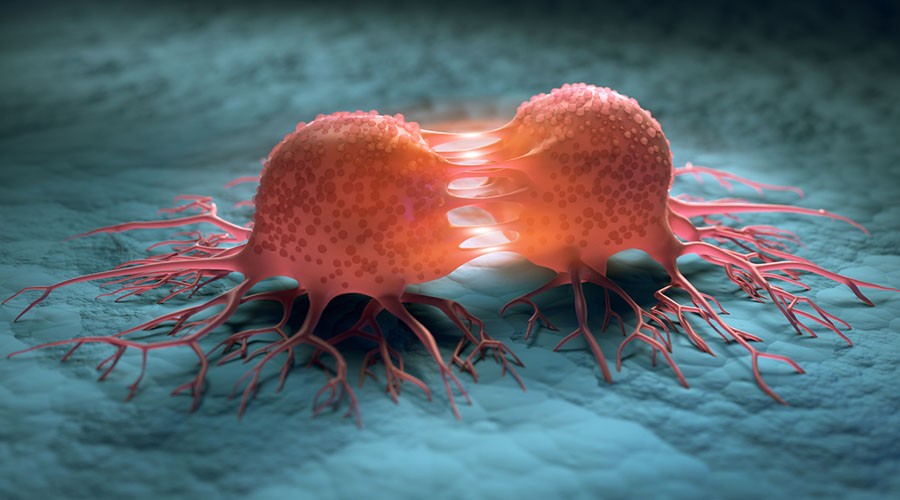
Microfluidic squeezing technology can treat head, neck cancer
Microfluidic squeezing technology is a promising tool in the fight against head and neck cancer. This cutting-edge technology has the potential to provide more effective and less invasive treatment options for patients. In this article, we will explore what microfluidic squeezing technology is, how it works, and how it can be used to treat head and neck cancer.
What is Microfluidic Squeezing Technology?
Microfluidic squeezing technology is a technique that uses tiny channels, or microchannels, to manipulate cells and other small particles. These microchannels are typically made of plastic or glass and can be as small as a few microns in diameter. They allow researchers to control the flow of fluid, and therefore the movement of cells or other particles, with incredible precision.
The concept of microfluidics has been around for decades, but recent advances in the field have led to the development of new applications, including microfluidic squeezing technology. This technique has the potential to revolutionize the way we diagnose and treat a wide range of diseases, including cancer.
How Microfluidic Squeezing Technology Works
Microfluidic squeezing technology works by applying pressure to cells or other small particles as they flow through a microchannel. This pressure causes the cells to deform, or change shape, in a way that can be used to measure their physical properties.
In the case of cancer cells, these physical properties can be used to identify and isolate cells that are more aggressive or resistant to treatment. By studying these cells, researchers can develop new therapies that target specific types of cancer cells, leading to more effective and personalized treatments.
In addition to identifying and isolating cancer cells, microfluidic squeezing technology can also be used to deliver drugs or other therapies directly to tumors. By controlling the flow of fluid through the microchannels, researchers can target specific areas of the body and deliver treatments with incredible precision.
Microfluidic Squeezing Technology in the Treatment of Head and Neck Cancer
Head and neck cancer is a complex disease that can be difficult to treat. Conventional treatments, such as surgery, radiation therapy, and chemotherapy, can be invasive and have significant side effects. Microfluidic squeezing technology has the potential to provide more targeted and less invasive treatment options for patients.
One way that microfluidic squeezing technology can be used in the treatment of head and neck cancer is by isolating and studying cancer cells. By analyzing the physical properties of these cells, researchers can identify which cells are more aggressive or resistant to treatment. This information can be used to develop new therapies that specifically target these types of cancer cells, leading to more effective treatments with fewer side effects.
Another way that microfluidic squeezing technology can be used in the treatment of head and neck cancer is by delivering drugs or other therapies directly to tumors. This approach, known as targeted drug delivery, has the potential to improve the efficacy of treatments while reducing side effects. By controlling the flow of fluid through the microchannels, researchers can deliver drugs directly to the tumor site, avoiding healthy tissue and minimizing the risk of side effects.
One recent study used microfluidic squeezing technology to deliver a combination of two chemotherapy drugs directly to head and neck cancer cells. The results of the study showed that this approach was more effective at killing cancer cells than conventional chemotherapy. The researchers also found that the microfluidic squeezing technology allowed them to use lower doses of the drugs, reducing the risk of side effects.
Future Directions for Microfluidic Squeezing Technology
Microfluidic squeezing technology is still a relatively new technique, and there is much to be learned about its potential applications in the treatment of head and neck cancer and other diseases. However, the early results are promising, and there is a great deal of excitement about the future of this technology.
One area of research that is likely to receive increased attention in the coming years is the use of microfluidic squeezing technology in personalized medicine. By analyzing the physical properties of cancer cells, researchers can identify which cells are most likely to respond to different types of treatment. This information can be used to develop personalized treatment plans for individual patients, leading to more effective and targeted therapies.
Another area of research is the development of new drugs and therapies specifically designed to be delivered using microfluidic squeezing technology. Researchers are exploring ways to modify existing drugs to make them more effective when delivered through microchannels. They are also developing new types of drugs that are specifically designed to be delivered in this way.
There is also a growing interest in the use of microfluidic squeezing technology in the diagnosis of cancer. By analyzing the physical properties of cells in a patient’s blood, researchers may be able to detect the presence of cancer at an earlier stage than is currently possible. This could lead to more effective treatments and better outcomes for patients.
Conclusion
Microfluidic squeezing technology is a promising tool in the fight against head and neck cancer. This cutting-edge technology has the potential to provide more effective and less invasive treatment options for patients. By analyzing the physical properties of cancer cells, researchers can identify which cells are more aggressive or resistant to treatment. This information can be used to develop new therapies that specifically target these types of cancer cells, leading to more effective treatments with fewer side effects.
Microfluidic squeezing technology can also be used to deliver drugs or other therapies directly to tumors, avoiding healthy tissue and minimizing the risk of side effects. While this technique is still in the early stages of development, the early results are promising, and there is a great deal of excitement about the potential of this technology in the future of cancer treatment.
Visit DocMode for Courses and lectures
